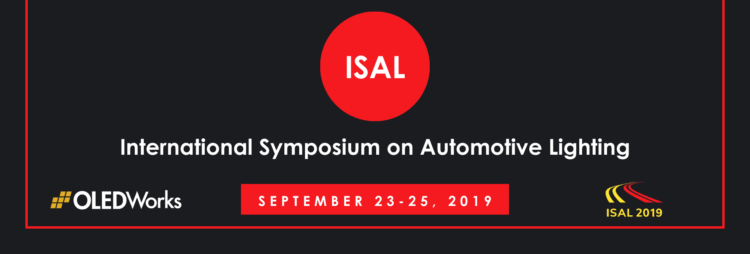
David DeJoy, CEO of OLEDWorks, interviews Dr. Wolfgang Huhn, Head of Light and Visibility at Audi.
DeJoy: Well thank you for joining us here at our booth, and for our working relationship, thank you very much. Can you tell us a little bit about your vision for OLED at Audi?
Huhn: Yes, of course, thank you for inviting me here. It’s a very good opportunity. Yeah, we have always, at Audi, we always think about what is the customer expecting from us, so we want to work to surprise the customer. And of course, we also want to earn money, so we need something which is really fancy and which has a function, which adds something to functionality and to safety. And if we combine these both, then we have good success. And this is something we’ve achieved with the OLEDs, we are completely convinced.
The first steps with the OLED were this Generation 0 problem, so what can we do? What is the additional benefit? So the first was only having a nice lit surface which is completely smooth and homogeneous. But that’s not all. So now we have the segments. The 60 segments in one piece of the OLED gives us much more possibilities. And what we together, what we will offer to the customer in the near future, has never been possible before. And I think we are ahead, with our OLED strategy, we are ahead of the market.
D: So you and Audi have been innovating lighting technology for a long time. How would you compare the difficulties with OLED with other technologies that you’ve innovated? Are they more challenging, the same, different?
H: Yeah sure. Everything has, every innovation and first time, is always difficult, so you learn a lot of things, more, in the very first generation. Here, the challenge is the multi-channel technology. We need to address now much more channels and pixels we ever had in a rear lamp. We come from one break lamp, one or two position lamps, and now the moving indicator. But this is now factor 10 of the complexity and the key is the software now. And the software and the rear lamps was not so related. And now it’s the key. And this is what we have to learn, where we have to invest, where we have to train people, search talents who are able to do that. We have one guy who came from the gaming areas, yeah, and he helps us a lot.
D: How important are the partnerships that you’ve made in order to innovate and commercialize OLED in your products?
H: Yeah, you need, of course, a very close partnership, that we have of course. And after we have made our development and our vision, then we come to the first tier supplier. And this is unusual, normally we have to go the other way around. We go to the first tier, and the first tier is looking for a second tier with the light source. Not possible here. Definitely not possible here. Our business is the enabler for the rest.
D: It seems that there’s a big difference between OLED because the design elements are so integrated into the actual light engine.
H: Absolutely. And inside, the work with a designer is the very first. Of course we need to realize it with new electronics and new software, but if our design department has not these ideas where the customer says “wow!” – if this is not happening, just with functionality, you don’t make money.
D: Yeah. So, how excited is your design team over the OLED technology?
H: Ahh, you have seen Michael and Stephan, so of course they are completely convinced and excited! And they come in the morning and look forward that they can start. So this is a good thing, and I think we have that spirit.
D: Any other comments that you want to make about OLED at Audi and innovation at Audi?
H: Yeah, innovation at Audi… Okay, the OLED will have some good new spirits. The next is the bending what we need, the far and distant 3D. And this will develop and, yeah, we need to convince our heads of the project who are sitting on the money to sponsor us, and they see the results and so we get our funding then.
D: At OLEDWorks we’re convinced with scale we’ll get the benefits of cost going down. Can you talk a little bit about the importance of [getting] the cost down, and really, the commercial readiness of OLED for automotive?
H: Yeah, sure. This is… in every innovation we start with a really high cost point, and then after, the second generation needs to be half. And then it continues improvement in cost. And you need some volume, of course. I think you have a good machine size, machinery part size, so this is okay. You don’t need, to be profitable, you don’t need tens of millions of pieces a year. So a smaller scale, this is good for us. We wait, and expect that other companies, maybe inside the group, maybe outside, will see these fantastic possibilities and will also come to OLED, or come back to OLED.
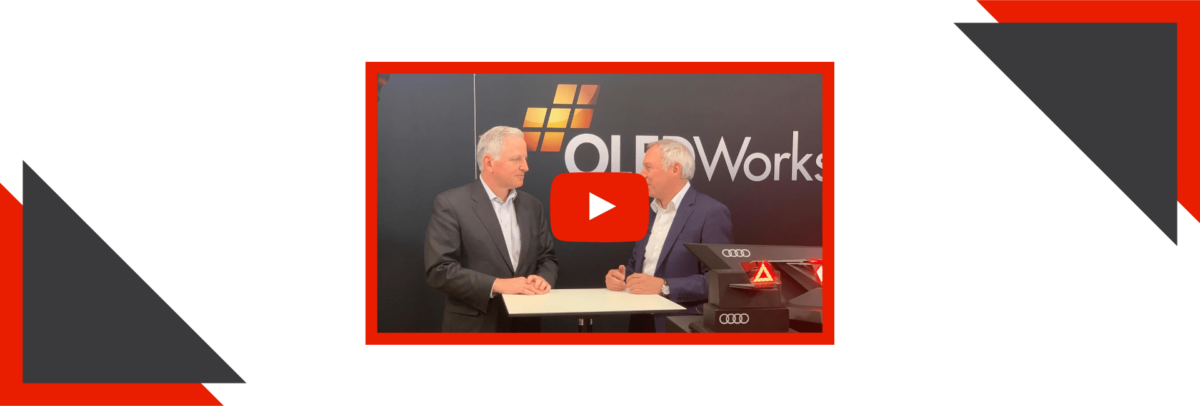
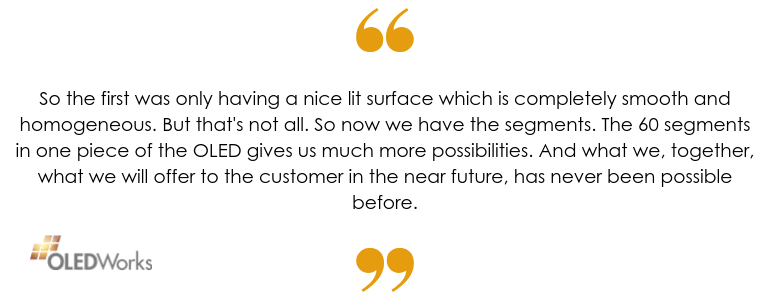
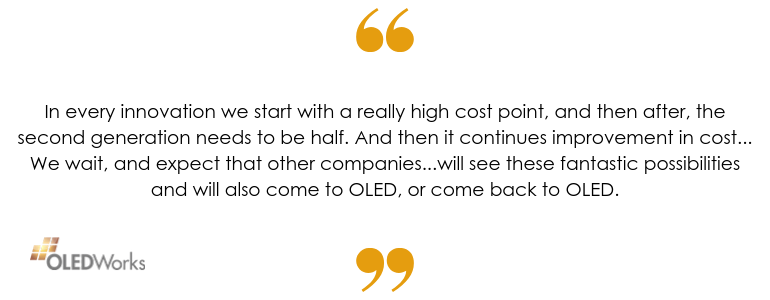
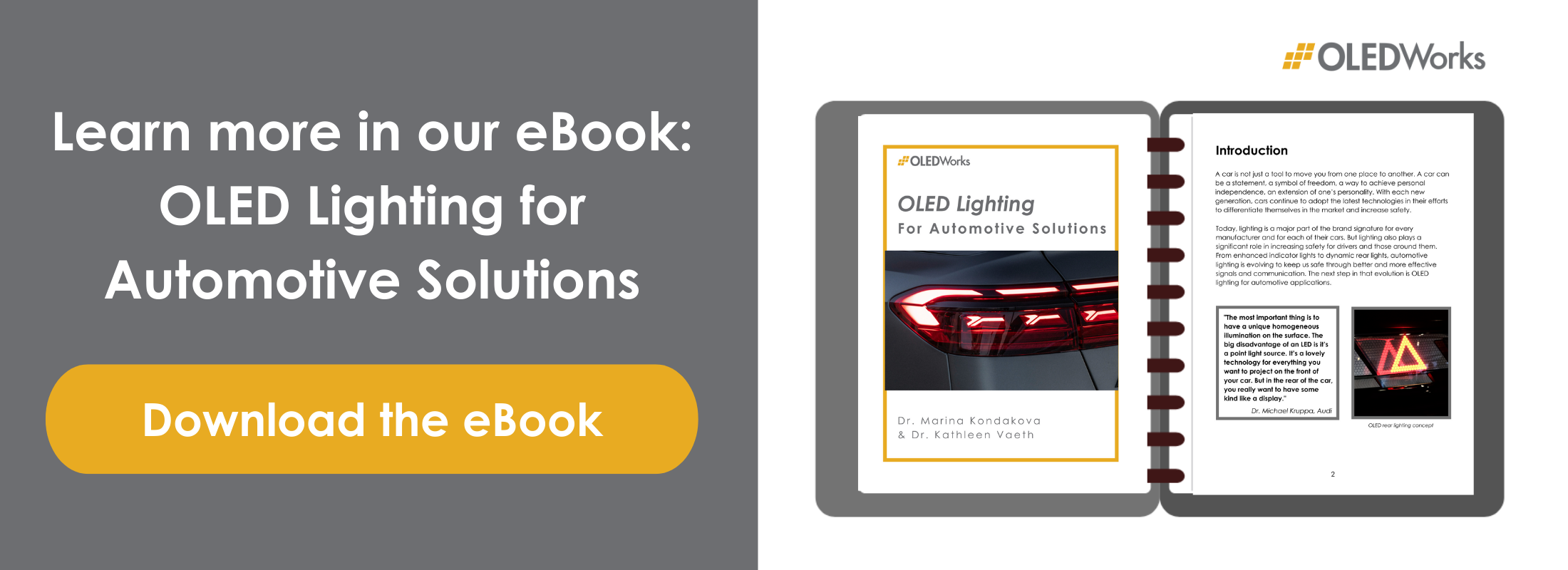
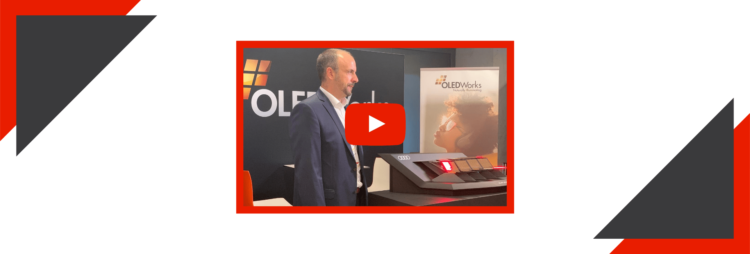
![[On-Demand Webinar] Why OLED for Automotive Lighting: The OEM and Tier 1 Supplier Perspectives](https://www.oledworks.com/wp-content/uploads/2022/03/MicrosoftTeams-image-15-750x254.png)